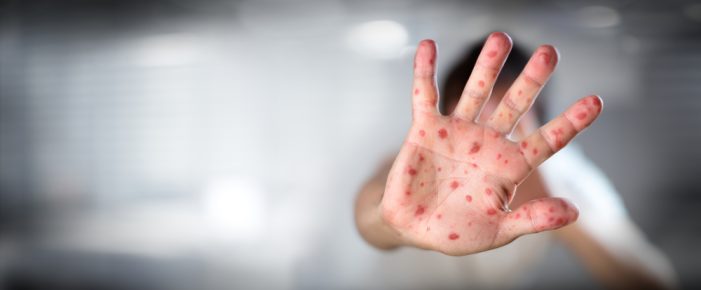By: Janet Howard
Hand, foot and mouth disease (HFMD) is a viral illness familiar to many parents and pediatricians—but that doesn’t make it harmless. Recently, healthcare providers in New York have observed a notable rise in HFMD cases, particularly in the spring and summer months. Here’s what you need to know: what HFMD is, how to recognize it, who’s most vulnerable, how easily it spreads, and why it’s currently becoming more common in New York—and what you can do about it.
What Is Hand, Foot and Mouth Disease?
HFMD is a mild—but highly contagious—viral infection most commonly brought on by the Coxsackievirus A16 or Enterovirus 71, both members of the broader enterovirus family. It begins with symptoms such as fever and general malaise, followed within a few days by the characteristic rash or blisters on the hands, feet, and mouth—hence the name.
Common Symptoms to Watch For
Symptoms usually begin 3 to 6 days after exposure and may include:
- Fever, often mild to moderate
- Sore throat, reduced appetite, runny nose
- Small, flat or raised discolored spots that may develop into blisters, appearing on the hands, feet, mouth, and sometimes the buttocks or groin
- Painful mouth sores, making eating, drinking, and swallowing uncomfortable—for children, especially challenging
- Less common—but possible—gastrointestinal symptoms like vomiting or diarrhea
Typically, HFMD resolves on its own within 7 to 10 days, though mouth sores may linger a bit longer.
Who Is Most at Risk?
Young children—particularly those under the age of five—are at highest risk. Their developing immune systems and frequent close interactions in settings like daycares and schools make transmission more likely. Adults can get HFMD too—often with milder symptoms—but can still contract and spread the virus.
How Contagious Is It?
HFMD is highly contagious. It spreads through:
- Saliva, nasal discharge, respiratory droplets
- Fluid from blisters
- Fecal–oral transmission—viral particles may persist in stool for weeks, even after symptoms Daycares and preschools are common hotspots due to frequent close contact, shared toys, and diaper.
Why It’s on the Rise in New York
According to Northwell Health as reported by Crain New York, urgent care clinics across New York have seen HFMD cases triple in some counties compared to last year—a clear indication that the illness is currently on the rise. This spike comes as kids prepare to return to school and daycare settings where the virus flourishes.
Prevention and Care: What You Can Do
While there’s no specific treatment or vaccine for HFMD in the U.S., there are smart ways to manage symptoms and help prevent the spread:
Symptom Management
- Use over-the-counter pain relievers like ibuprofen or acetaminophen for fever and discomfort—avoid aspirin in children.
- Ensure the child stays well-hydrated—offer cool drinks, popsicles, or slushies to help ease mouth pain.
- Encourage soft foods—like mashed potatoes or macaroni and cheese—and avoid salty, spicy, or acidic foods that may irritate mouth sores.
When to Stay Home
Children should return to daycare or school only after:
- They have been fever-free for at least 24 hours
- Their blisters have healed or are drying
- They seem well enough to participate without uncontrolled drooling or discomfort
Hygiene and Disinfection
- Frequent handwashing with soap is essential, especially after diaper changes or wiping noses.
- Disinfect toys and surfaces regularly—blister fluid and nasal secretions can linger on objects and surfaces.
When to Seek Medical Attention
Most cases of HFMD are mild and manageable at home, but see a healthcare provider if:
- The child shows signs of dehydration—such as not urinating, lethargy, dry mouth, or sunken eyes.
- High or persistent fever (>3 days)
- The child is unusually drowsy, irritable, has neck stiffness, or shows other concerning neurological symptoms. Rare complications like viral meningitis or encephalitis may occur, especially with certain strains like Enterovirus 71.
Bottom Line
Hand, foot and mouth disease is a common seasonal viral infection—especially for young children. While usually mild, its highly contagious nature makes it a recurring public health headache, particularly in shared childcare environments. The current surge in New York, as reported by Northwell Health, serves as a timely reminder to stay vigilant.
By practicing rigorous hygiene, keeping unwell children at home, and giving supportive care when needed, families and caregivers can help curb transmission and ensure children recover safely and comfortably.
Disclaimer: This article is for general informational purposes only and should not be taken as medical advice. If you or your child may have hand, foot, and mouth disease, consult a licensed healthcare professional for an evaluation and appropriate guidance.

